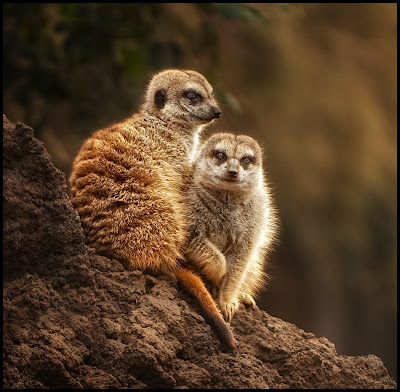On Saturday, the Bay Area Photo Club had its first field trip for 2009. I must admit, I am not the best at attending our club’s field trips. No excuse. I just have not made many of them over the past year. I usually have a good time at the field trips—not so much for the photographing, but more for the talking to my fellow members.
Before I go on, let me give Bob Dempsey a big “thank you.” He did a great job finding this outing at the Houston Zoo, and the fact that he, personally, made the rain stay away from Houston until late in the afternoon, well, you cannot say enough about this level of commitment to his fellow club members.
Great job, Bob. Now, what are you going to do for us next month?
When I first saw Bob’s email regarding the field trip, I really was not interested in going to the Houston Zoo because I regularly venture over to the zoo with my two grandchildren. But, then I started thinking (I know a dangerous thing for me) that I do not take many photographs of the zoo because of the two little ones.
So, I decided to go. I then asked myself, “Self, what do you want to get from this outing?” I thought aboutit for a while and then decided that I wanted ten shots for my blog: three of the animals, three of birds, three of people and one whatever. I thought that this would be a pretty high goal, but I wanted to push myself.
I thought that I should pack light since I would be doing a lot of walking, I narrowed my equipment down to: Nikon D3, Nikon 70-200mm f/2.8, Nikon 300mm f/2.8, Nikon 1.7 Teleconverter, Nikon 105mm f/2.8 Macro, two Nikon SB800 Speedlights, and tripod. Almost all of my animal and bird shots were taken with the Nikon 300mm with 1.7 teleconverter attached while almost all of my people shots were taken with the Nikon 70-200mm. I never used the speedlights or the Nikon 105mm macro lens.
I limited my post processing to my usual global changes in Lightroom (setting white and black points, adding clarity, vibrance and mid-tone contrast) and in Photoshop, to some “clean-up” (or as Cindi calls it “gardening”), adding a black stroke around the edge, cropping the image, local sharpening of main subject and some local exposure adjustments. I would estimate that I spent less than 10 to 15 minutes on post processing of each photograph in the series that you will be seeing.
I plan to limit the technical information and the back story on each of the photographs. I want this series to be about what kind of photographs you can produce from a visit to the Houston Zoo. I want to challenge my fellow Bay Area Photo Club members to tell me how I could have taken a better shot. (Legal notice: I reserve the right to delete all comments that tell me to sell my camera and take-up knitting.)
I want everyone to understand a few mistakes I made along the way. First, I forgot to photograph the sign of the various animals. I am not that good with the names of these wonderful creatures. So, some of the photographs will include “mystery animal #”. This is such a stupid mistake. I usually photograph signs to help me remember things like this because I think it adds to the overall effect of the image if you have these details in your description and once you have then it is easy to add them to your keywords in Lightroom. Second, I did not always get the name of the people I photographed. Finally, I did not “try” enough different things. I did not experiment much. Photographing many of the animals takes some effort because of the barriers that the zoo has to keep the animals in their cages or possibly keep the animals out of the cage (depending on your viewpoint). I did not try shooting through many of these barriers. In hindsight, I think I might have gotten something that is a little different if I had tried this more.
Today’s image is not really about the two “mystery animals #1s” but rather about the light. It was taken early in the morning. I wanted the soft light and the backlighting to be highlighted.
Enjoy.
Camera settings: Nikon D3, 70-200 f/2.8 at 200mm, shot at ISO 800, f/4 and 1/180 of a second with on a tripod.















